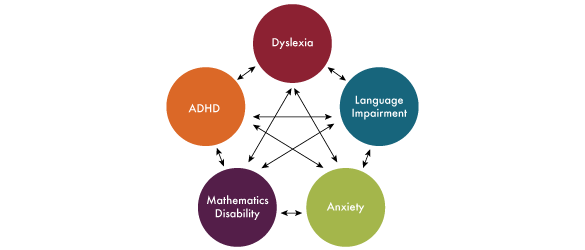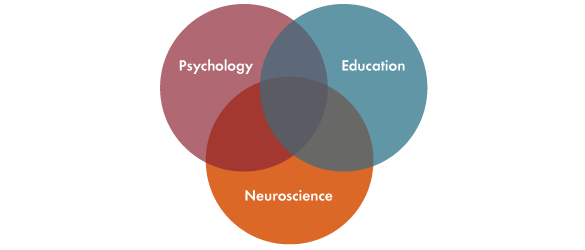Research
We are currently pursuing two main lines of research. The first focuses on the neuropsychology of comorbidity. Our second line of research focuses on educational neuroscience, which applies recent findings from the neuroscience of learning to inform educational practice. Learn more about these projects and their related studies and research grants.
Our Projects
Neuropsychology of Comorbidity
Comorbidity refers to the challenges that children with learning challenges experience when they are diagnosed with additional disorders, such as ADHD, speech/language disorders and anxiety disorders. Because children with co-occurring difficulties are at highest risk for poor academic and functional outcomes, we are trying to understand why these challenges tend to co-occur and what protective factors may prevent the onset of comorbidities.
We are conducting studies to investigate the brain, cognitive and developmental factors that contribute to risk and resilience in children with comorbidities. Our current work is focusing on the comorbidity of dyslexia with ADHD and anxiety. Our work on comorbidity is currently funded by a P50 Center grant and an R15 AREA grant from the National Institute of Child Health and Development (NICHD).
Educational Neuroscience
We aim to foster a closer dialogue between child clinical psychology and education in the emerging field of educational neuroscience. Educational neuroscience seeks to inform educational practice by applying recent findings from the neuroscience of learning.
There are several challenges faced by this new and growing field, most notably a wide gap between the expertise and training of educators and neuroscientists that hinders effective communication. One consequence of this gap is the proliferation of "neuromyths" or misconceptions about neuroscience research and the way it applies to learning and development. Although there is widespread concern about neuromyths, there is not much empirical data on their prevalence in the United States.
To fill this gap, we conducted a recent study on rates of neuromyths among educators, neuroscientists and the general public, which showed strikingly high rates for many neuromyths across all groups. We are now developing a deeper understanding of the impact of neuromyths on classroom instructional practice and researching the most effective ways to dispel these myths.






